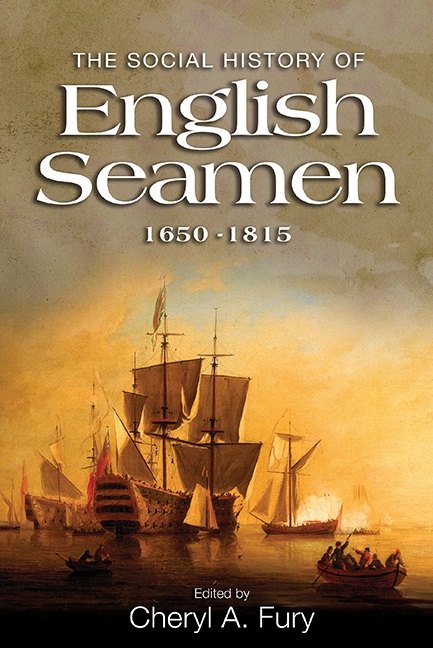Book contents
- Frontmatter
- Dedication
- Epigraph
- Contents
- List of illustrations
- List of contributors
- List of abbreviations
- Introduction
- 1 The Development of Sea Power, 1649–1815
- 2 Naval Seamen, 1650–1700
- 3 Officers and Men of the Navy, 1660–1815
- 4 The Impact of Warfare on Naval Wives and Women
- 5 Officers, Shipboard Boys and Courts Martial for Sodomy and Indecency in the Georgian Navy
- 6 Health Provision in the Royal Navy, 1650–1815
- 7 The Origins and Careers of English Merchant Seamen in the Late Seventeenth and Early Eighteenth Centuries
- 8 Private Enterprise, Public Policy and the Development of Britain's Seafaring Workforce, 1650–1815
- 9 Jack Tar's Food: Masculine Self-fashioning in the Age of Sail
- 10 Pirates, Privateers and Buccaneers: The Changing Face of English Piracy from the 1650s to the 1720s
- Conclusion
- Bibliography
- Index
4 - The Impact of Warfare on Naval Wives and Women
Published online by Cambridge University Press: 11 August 2017
- Frontmatter
- Dedication
- Epigraph
- Contents
- List of illustrations
- List of contributors
- List of abbreviations
- Introduction
- 1 The Development of Sea Power, 1649–1815
- 2 Naval Seamen, 1650–1700
- 3 Officers and Men of the Navy, 1660–1815
- 4 The Impact of Warfare on Naval Wives and Women
- 5 Officers, Shipboard Boys and Courts Martial for Sodomy and Indecency in the Georgian Navy
- 6 Health Provision in the Royal Navy, 1650–1815
- 7 The Origins and Careers of English Merchant Seamen in the Late Seventeenth and Early Eighteenth Centuries
- 8 Private Enterprise, Public Policy and the Development of Britain's Seafaring Workforce, 1650–1815
- 9 Jack Tar's Food: Masculine Self-fashioning in the Age of Sail
- 10 Pirates, Privateers and Buccaneers: The Changing Face of English Piracy from the 1650s to the 1720s
- Conclusion
- Bibliography
- Index
Summary
Women's contribution to British naval supremacy in the long eighteenth century tends to be neglected or sensationalised. Numberless women whose lives were blighted by naval warfare are forgotten, while the few who donned male clothes and went to sea remain figures that catch the public imagination. Hundreds of women boarded warships officially, since the wives of warrant officers (including gunners, boatswains, masters, pursers and carpenters) were allowed to accompany their husbands. But thousands more women were connected to the navy, though they never left dry land, and the importance of their work in enabling men to be kept at sea cannot be overestimated. They held families together while their husbands were away at sea for long periods, and dealt with household repairs, children's schooling, investments and debts. As consumers, the wives and female relatives of seamen also helped to support a brisk trade in naval commemoratives, contributing to the creative economy of the period.
Although a very few women went to sea disguised as men, contemporary ballads and accounts of their adventures do offer valuable insights into the lives of working-class women which might not otherwise be recorded. Hannah Snell's description of her time in the navy gives a unique, female perspective on life at sea in the mid-eighteenth century. Snell alleged that she donned male clothes and joined the marines to find her lover (a commonly used convention), and was drafted to serve in Admiral Boscawen's fleet, bound for the East Indies. In contrast, Mary Anne Talbot maintained that she was forced to go to sea, seduced by an army captain who disguised her as his servant when he was posted overseas. She claimed that he was killed in 1793 and that afterwards she served for three years in the navy before coming ashore, still only nineteen. Much of her story seems to be embellished, if not pure fiction, but, like others, Talbot may well have served at sea in male dress. The navy was desperate for recruits and took those who passed for young boys without question. Crossdressing women were never punished if found out. They often became celebrities afterwards and their stories found a ready audience.
- Type
- Chapter
- Information
- The Social History of English Seamen, 1650-1815 , pp. 71 - 88Publisher: Boydell & BrewerPrint publication year: 2017

